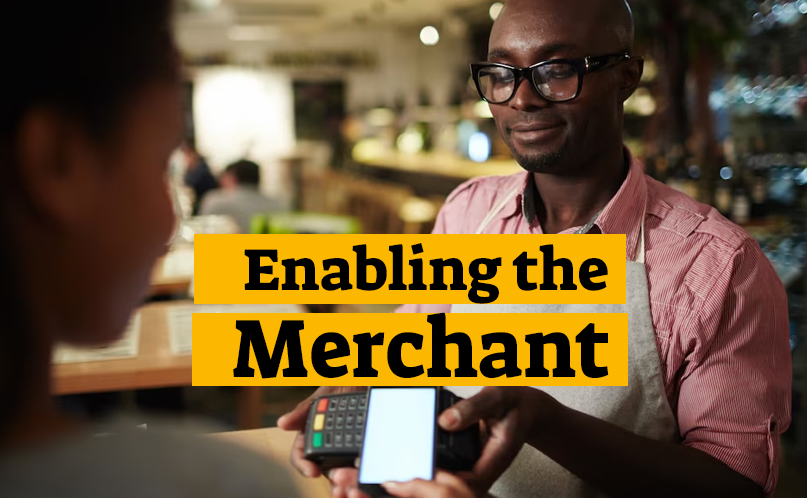Enabling the Merchant

Some 20 years ago, businesses had to adopted inefficient payment methods that were thought to be efficient. Typically, the procedure include entering card data into merchant platforms, or accepting payment personally or by mail. Businesses have had to regularly deal with ineffective payment methods, merchant tools, and internal corporate software that all served as roadblocks to conducting business. But this has improved as fintechs focus on enabling the merchant carryout his activities.
For a number of reasons, B2B and B2C marketplaces, portals, and apps are investigating embedded finance. Platforms with payment options have higher levels of stickiness and volume, which boosts revenue. Another advantage is the simplicity with which payment expectations for both suppliers and buyers are met.
As a result, a lot of marketplaces, portals, and applications have begun paying suppliers quickly and giving customers credit while also taking on the risk. Therefore, many of these organizations have been debating whether to develop their own embedded finance solution to factor invoices or partner with fintech payment companies that specialize in invoice financing. Startups in both B2B and B2C e-commerce are constantly looking to enhance service delivery by integrating a financial solution.
The need for fintech service in e-commerce
Getting on with a fintech means lower fees, better customer service, and tailored efficiency since most Fintechs are focused on serving the unbanked and underbanked; which make up a greater percentage of Africa’s population. At the moment, it is looking like if you’re not already working with a Fintech partner, you’re missing out.
Fintechs have been successful in enhancing not only the financial sector but also the larger digital ecosystem, boosting the continent’s overall economic performance. Startups in the fintech industry are bringing new value to customers and businesses in a variety of sectors, including lending, banking, payments, and invoice funding.
The overall growth rate of the fintech market attests to this constructive transformation. By 2025, the market is anticipated to have grown at a 22% annual rate and be worth $305 billion (Market Data Forecast, 2020). Aiming to improve, innovate, and develop technology that makes financial services more effective, accessible, and personable is what Fintech does best.
Companies are encouraged to bring payments in-house as they grow to handle bigger processing volumes. They eventually get eager to meet businesses developing better payment infrastructure in order to increase profit and expedite payment.
As a result of their inefficiency and messy or insufficient customer data, banks sometimes have trouble managing fraud, compliance, and underwriting. Given that FIntechs offer the necessary convenience for transactions, many startups are adopting the strategy of integrating with them.
Specific Advantages
Fintechs are able to consider the position of the retail customer, addressing their needs and problems. By positioning themselves as catalysts of successful business, fintechs can typically, close the gap between customer needs and the fulfillment of these needs. Closing this gap eventually leads to:
Better Service
One thing that all Fintech developers have in common is that they all saw a customer need, which was not being met by traditional financial service providers. They are meeting these needs by using technology which makes their services more accessible, customized, and faster. For example, the iK Pay Online products – the iKhokha Payment Gateway which provides online payment solutions for small businesses is already processing a quarter of a million Rand per month in merchant transactions.
Due to how firmly rooted legacy operating policies are in traditional financial service providers’ business models, Fintechs have the advantage of being a more modern solution and, therefore, the ability to avoid restrictive policies that can take years (even decades) to transform/improve successfully. South Africa’s WooCommerce is already enjoying checkout improvement since embedding a veritable payment platform.
Innovative Solutions for Buyers
Fintechs, in contrast to their traditional counterparts, are not constrained by the old way of doing things; as a result, they can innovate and pivot faster. In other words, they keep up with the constantly shifting business environment, which benefits retail businesses as well.
Quick invoice submission is made possible by fintechs, who also offer flat rates, no contracts, quick deposits, and a fully digital experience. Fintechs support the growth of E-commerce firms and allow them control over when they get paid by utilizing technology and creativity. These are just a few of the cutting-edge strategies that fintechs may provide, along with improved fees, enhanced efficiency, tailored client service, and maximized disintermediation.
Cost-Effective
Most Fintech companies have significantly cheaper prices than their traditional competitors, especially those in the banking, payments, and foreign exchange sector. They credit this to their adept use of technology to cut down on both their operations and customer acquisition expenses.
This information offers complete fee transparency and enables small business owners to calculate the precise amount they would save by choosing this Fintech solution. Businesses can pay their foreign suppliers, repatriate their foreign currency earnings, pay import/export fees, and other expenses in a more cost-effective manner, resulting in immediate savings and improved margins over time.
